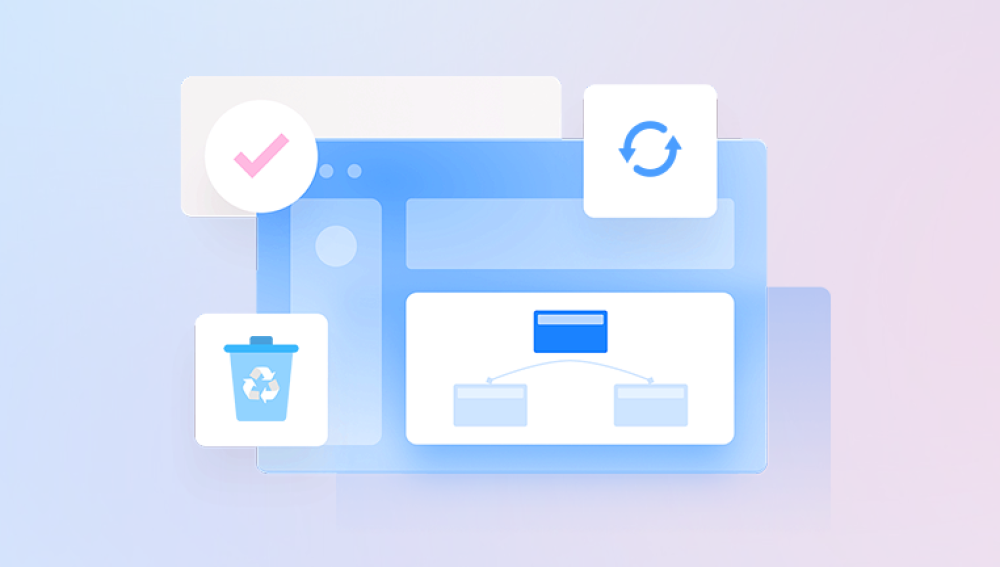Data loss is a modern-day nightmare for individuals and businesses alike. From personal memories stored on external drives to sensitive business databases locked in RAID arrays, the loss of digital information can be emotionally distressing and financially damaging. In a technology-driven city like San Diego home to a vibrant blend of tech startups, defense contractors, biotech companies, and everyday consumers the demand for reliable, affordable, and efficient data recovery services is high.
San Diego's tech ecosystem includes everything from military R&D hubs to university research labs, meaning that data storage and protection are essential across industries. With such diversity in technology, the data recovery sector has grown in both capability and specialization to meet local needs.
San Diego is home to several well-established data recovery centers, often equipped with state-of-the-art tools and Class 100 cleanrooms, as well as a variety of IT service providers offering data rescue solutions. Whether you need a high-priority RAID rebuild or simple photo recovery from a corrupted SD card, the region offers a competitive mix of price and expertise.

Types of Data Loss Scenarios
Before diving into costs, it's crucial to understand the types of data loss you may encounter. Each type of issue influences the complexity of recovery and, therefore, the price.
1. Logical Failures
These involve software-level issues like:
Deleted files
Reformatted drives
Corrupted partitions
File system errors
Logical failures do not involve physical damage to the hardware, making them less costly and easier to resolve in many cases.
2. Mechanical or Physical Failures
When a hard drive fails physically, it's typically due to:
Damaged read/write heads
Motor malfunction
Scratched platters
Water or fire damage
Such recoveries require cleanroom environments and specialized tools, making them significantly more expensive.
3. Firmware Corruption
Hard drives operate with internal firmware that manages hardware behavior. Firmware corruption can make a drive inaccessible. Specialized tools are required to reprogram or emulate the firmware to access the data.
4. RAID/NAS Failures
These involve multi-drive storage systems where data is spread across several disks. Recovery complexity increases based on:
RAID level (e.g., 0. 1. 5. 10)
Number of drives
Type of failure (logical, hardware, or controller-based)
5. SSD Failures
While SSDs don’t have moving parts, data recovery is more challenging due to:
TRIM functions that overwrite deleted data
Controller-level corruption
Chip-level failures
Factors That Influence Data Recovery Costs in San Diego
Several variables determine how much you’ll pay for data recovery in San Diego. Local providers typically assess jobs individually, but understanding these factors will help you anticipate what you'll be quoted.
1. Type of Storage Device
Common devices include:
HDDs (2.5" or 3.5")
SSDs
USB flash drives
SD cards
RAID arrays and NAS units
SSDs and RAID setups usually cost more to recover due to their complexity.
2. Type of Damage
As discussed, logical damage is cheaper to recover than physical. Recovery from water, fire, or impact-damaged drives typically costs more due to increased risk and technical difficulty.
3. Drive Capacity
Larger drives contain more data and require longer scan times. For instance, a 4TB drive may take 2–3 times as long to image and analyze as a 500GB one, increasing the overall cost.
4. Turnaround Time
Most recovery firms offer tiered turnaround speeds:
Standard (5–10 business days): Base rate
Expedited (2–3 days): Additional $200–$400
Emergency (24–48 hours): Often double the standard rate
5. Parts Replacement
Mechanical recoveries may require donor parts. Older or uncommon drive models may have parts that are difficult to source, increasing both time and cost.
6. Recovery Success Rate
Most reputable providers in San Diego offer a "no data, no charge" policy. However, if recovery is possible but partial (e.g., some files corrupted or incomplete), costs may be prorated.
Average Data Recovery Costs in San Diego
While prices can vary between providers, the following are rough estimates for common recovery scenarios:
These costs are comparable to major cities like Los Angeles or San Francisco, although local San Diego firms may offer more flexible, customer-friendly pricing models.
What’s Included in a Data Recovery Quote?
A professional recovery quote in San Diego typically includes:
Free diagnostic evaluation: Determines recovery feasibility and costs.
Clone or image creation: Sector-by-sector duplication to avoid working on the original drive.
Recovery process: Data extraction, file system repair, and folder structure recreation.
Integrity checks: Testing the quality and accessibility of recovered files.
Delivery: Data returned on an external drive or via secure download.
Optional services may include:
Encrypted data handling
Digital transfer to cloud storage
Drive disposal or return shipping
Top Data Recovery Providers in San Diego
Several well-reviewed recovery labs operate in the San Diego area. While this guide avoids naming specific businesses, you’ll typically find:
Labs with on-site cleanrooms
24/7 customer support lines
Partnerships with Western Digital, Seagate, or Samsung
Drop-off and pick-up services
Technicians certified in ISO or SSAE-18 standards
When comparing providers, pay attention to turnaround guarantees, success rate claims, and verified customer testimonials.
DIY Recovery vs Professional Services
There’s a temptation to try do-it-yourself data recovery using tools like Recuva, EaseUS, or Disk Drill. These are viable options for logical failures, especially if:
You haven’t overwritten the deleted data
The drive is still recognized by your OS
There's no clicking or grinding noise from the drive
However, attempting DIY recovery on a physically damaged drive can cause permanent data loss. If your drive:
Makes strange noises
Is not detected at all
Smells burnt or was dropped
...you should seek professional help immediately.
San Diego’s professional recovery labs are equipped to handle these situations safely, preserving your data rather than risking further damage.
Tips to Save Money on Data Recovery in San Diego
Although data recovery can be expensive, the following tips can help lower your out-of-pocket costs:
1. Use a Local Provider
Avoid shipping your drive across the country. Local San Diego firms reduce shipping costs and turnaround time.
2. Ask About Flat Rates
Some labs offer flat-rate services for specific types of failures, especially logical recoveries or flash media.
3. Decline Emergency Service (If Possible)
If the data isn’t time-sensitive, choose standard service to avoid extra fees.
4. Prepare Your Own Return Drive
Instead of purchasing a new drive from the provider, bring your own external drive for data delivery.
5. Check with Insurance or Warranties
Some business insurance plans, credit cards, or drive warranties include data recovery clauses. San Diego-based consumers should check with their home or renters insurance for coverage.
How to Choose the Right Data Recovery Lab
Here are key things to consider when selecting a provider:
Certifications: Look for ISO 5/Class 100 cleanroom certifications and SSAE-18 compliance.
Experience: Choose a lab that specializes in your failure type—RAID, SSD, encrypted devices, etc.
Customer reviews: Look on Google, Yelp, and the BBB for testimonials.
No data, no charge guarantee: Protect yourself from being billed if no files can be recovered.
Security protocols: Ensure they follow proper chain-of-custody and data confidentiality policies.
Upfront pricing: Transparent estimates help prevent sticker shock.
Emergency Data Recovery in San Diego
In urgent cases—like retrieving files for a court case or recovering lost business data during a critical outage—many San Diego recovery labs offer emergency services. This typically involves:
24/7 phone support
Immediate diagnostic
Continuous technician attention (overnight shifts)
Weekend and holiday service
Emergency data recovery can cost double or triple the standard rate, but in high-stakes situations, the expense may be justified by the value of the recovered data.
The Cost of Doing Nothing
While recovery costs can seem high, it’s important to weigh them against what you stand to lose. San Diego businesses, in particular, rely heavily on data to run operations, manage clients, and handle transactions. For individuals, the emotional value of photos, videos, or personal documents may be incalculable.
A lost business proposal or CAD design could cost thousands in missed opportunities.
A research lab could lose years of experimental data without backups.
A wedding photographer could face reputational and legal consequences from lost client photos.
When you evaluate data recovery costs, always consider both the financial and emotional value of your data.
Preventative Measures to Avoid Future Recovery Costs
Once your data is recovered, take proactive steps to avoid repeat issues.
1. Backup Strategy
Implement the 3-2-1 rule:
3 copies of your data
2 different storage types (e.g., external HDD + cloud)
1 offsite location (e.g., cloud or another city)
2. Surge Protection
Invest in quality surge protectors and uninterruptible power supplies (UPS) to avoid electrical damage.
3. Regular Monitoring
Use SMART tools to monitor drive health and detect issues early.
4. Professional Servicing
Schedule annual maintenance checks if you're running RAID systems or business-critical servers.
San Diego residents and businesses facing data loss have access to a robust network of professional data recovery services. Whether you're dealing with accidental deletion, physical damage, or a catastrophic RAID failure, the cost of recovery can vary widely depending on the severity, type of media, and turnaround needs.
While data recovery costs can range from $100 to several thousand dollars, they are often justified by the value of the data recovered. By understanding the factors that influence pricing and what to expect from local service providers, you can make smart, informed decisions when facing digital loss.




